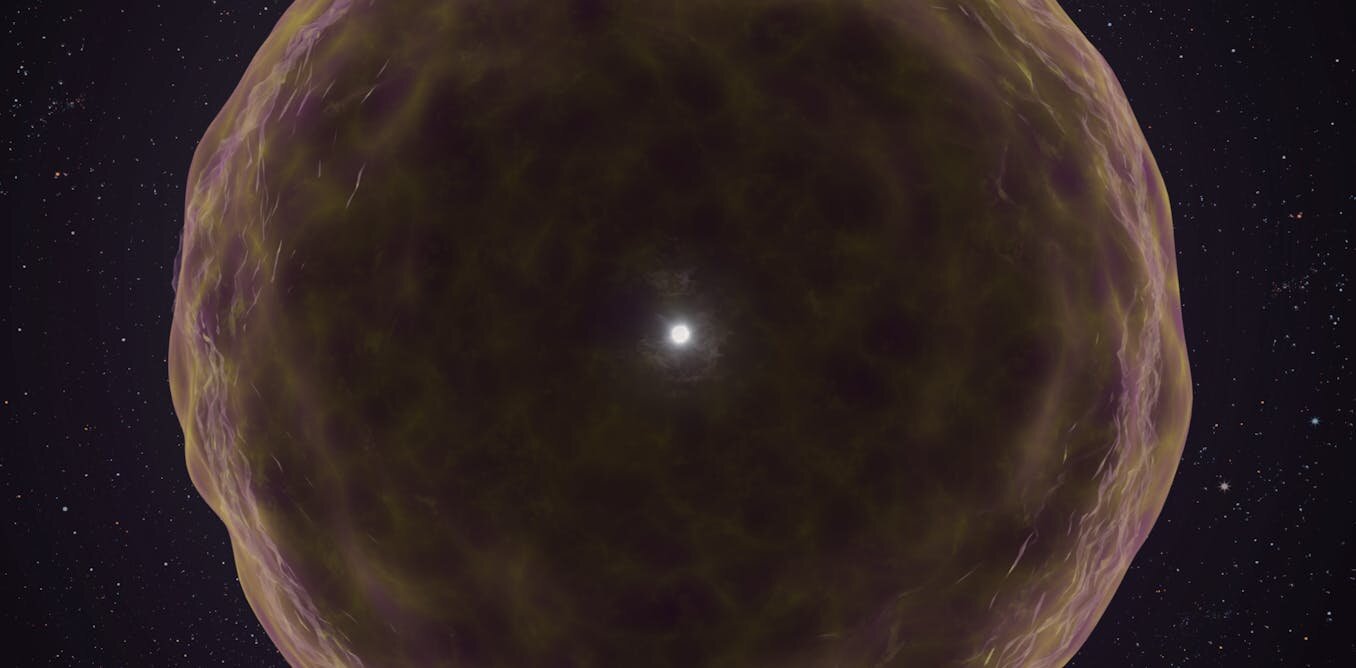Follow us on Google News (click on ☆)
When a massive star reaches the end of its life, it undergoes a series of internal transformations. At the star's core, nuclear fusion gradually combines light atoms to form heavier elements, such as carbon or oxygen. This process creates concentric layers, each rich in specific elements, stacked like the layers of an onion. The outer layers, made of hydrogen or helium, are usually expelled by stellar winds long before the final explosion.

Artist's impression of the extremely stripped supernova 2021yfj.
Credit: Keck Observatory / Adam Makarenko
In the case of supernova SN2021yfj, astronomers detected a gas envelope composed of silicon, an element formed very close to the star's iron core. Normally, this inner layer doesn't have time to move far enough away to be visible after the explosion, as it forms only a few months before the end. Its presence here suggests that all external materials were stripped away prematurely, thus revealing usually hidden regions.
Researchers propose the hypothesis that a companion star could be responsible for this extreme stripping. By orbiting the dying star, its gravity could have attracted and expelled the deep layers, including the silicon layer. This mechanism, although rare, matches theoretical models and helps understand how stellar winds can sometimes be amplified by binary interactions.
This observation validates nucleosynthesis models, which describe how stars produce chemical elements. Oxygen, neon, magnesium, and many other atoms essential for life are forged in these gigantic cosmic furnaces. Supernovae then scatter these elements into space, enriching the interstellar medium and enabling the formation of new stars and planets.
Thanks to such discoveries, we better understand the chemical evolution of the Universe. The first stars, devoid of heavy elements, gave way to more diverse generations, like our Sun and Earth. Each explosion contributes to this cosmic alchemy, gradually shaping a cosmos increasingly rich in elements and conducive to the emergence of life.
Stellar nuclear fusion
Nuclear fusion is the engine that powers stars. It transforms light atomic nuclei into heavier nuclei, releasing colossal energy in the form of light and heat. This process begins with hydrogen, the most abundant element, which fuses to form helium.
Over time, reactions accelerate and produce increasingly massive elements, such as carbon, oxygen, and finally iron. Each stage is shorter than the previous one: millions or even billions of years for hydrogen, compared to just a few days for silicon.
These reactions create a layered structure inside the star, where each stratum corresponds to a fusion stage. This organization allows astronomers to trace the star's chemical history during its explosion.
Without nuclear fusion, stars wouldn't shine, and the Universe would lack the elements necessary for the formation of planets and life.